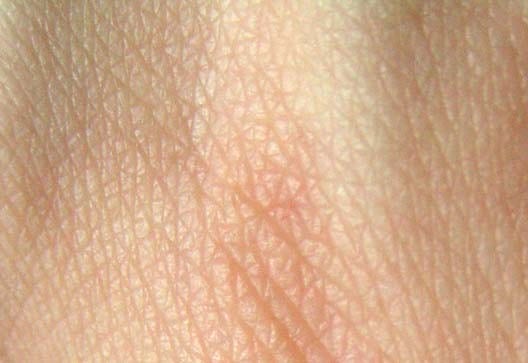A compound secreted in the bloodstream could be the key factor that causes wounds in older people to heal with less scarring than in younger people. The compound is called stromal cell-derived-factor-1 (SDF1), and researchers from the Perelman School of Medicine at the University of Pennsylvania showed that blocking it could influence scar formation and tissue regeneration in mouse and human skin, potentially providing a path to scar-less wound healing in humans. Cell Reports published the findings, which were drawn from studies of both mice and lab-grown human skin, today.
“Dermatologists and plastic surgeons have consistently observed that older people’s wounds heal with thinner scars than younger patients’, but until now, no one has been able to answer the question of why that’s the case,” said the study’s senior author Thomas H. Leung, MD, PhD, an assistant professor of Dermatology at Penn.
In the study, Leung and his team pierced the ears of mice of different ages – the equivalent of a 12-year-old and a 70-year-old if converted to human years. The hole closed with no scar formation in older mice, while younger mice healed with a visible scar. Researchers then exchanged the blood of young mice with old mice, pierced their ears, and found that the ears of old mice now scarred. They concluded whatever was causing the scarring must be something in the blood.
The team then took tissue samples from young and old mice and compared their gene expression signatures. They identified 80 differences, too many to study. But when they asked which gene products are found in the blood stream, the list narrowed to 13 suspects. One was SDF1, a signaling molecule that was previously shown to play a role in scar formation in the skin, liver, and lung, and it seemed like a promising possibility. They confirmed that SDF1 was expressed in younger mice but not older. To prove that SDF1 may be the causal factor, they created a mouse that lacked SDF1 in the skin. When SDF1 function was inactivated, even young mice began to regenerate skin, behaving, in this sense, like older mice.
“This is a rare instance where aging actually improves the body’s ability to heal rather than diminishing it,” Leung said. “When we’re younger, we secrete more SDF1 into the blood stream to form scars, but as we age, we lose this ability, which allows tissue to regenerate.”
To prove it, researchers exchanged the blood between young SDF1-deficient mice and older mice. This time, neither mouse scarred. The team went one step further and grew human skin in the lab, then injured it with a scalpel. Human skin also exhibited an age-dependent expression of SDF1.
Leung says this work has the ability to impact the clinic relatively quickly. SDF1 inhibitors already exist on the market and currently used as a treatment to mobilize stem cells. He and his team plan to study its use in preventing scar formation in humans.


